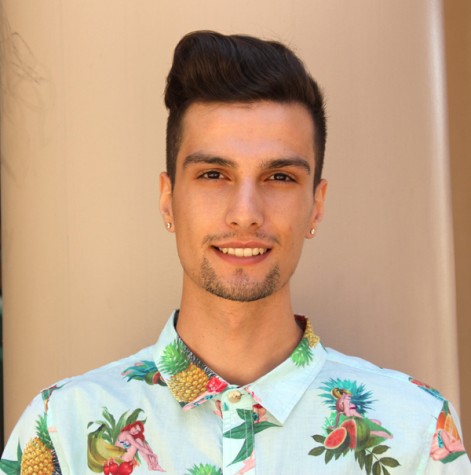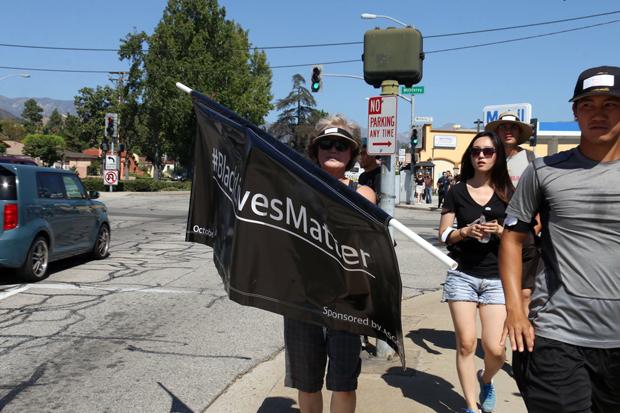‘Black Lives Matter’ Protest Marches to City Hall
marching to city hall: Sociology professor J.C. Moore holds a sign with a student, while marching to the Glendale City Hall. The sign reads #BlackLivesMatter, which started on Twitter in response to police hostility toward black people. Dozens of students and a few faculty members participated in the march.
Glendale College’s Sociology Club organized a nonviolent march for the Black Lives Matter movement on Oct. 1 at noon.
The marchers rallied at El Vaquero Plaza where students and faculty gave speeches and said a prayer before the march.
Black Lives Matter is an activist movement that started as a Twitter hashtag after George Zimmerman was acquitted of the fatal shooting of teenager Trayvon Martin in July 2013.
Since then, the movement has become a chapter-based national organization, campaigning in opposition of police brutality against black people.
“Black Lives Matter is a metaphor for us to tackle and attack injustice, discrimination, and prejudice,” sociology professor J.C. Moore said. “Black people are the ones who are the most victimized and marginalized, and they are the ones who are experiencing the bottom life in our society.”
Participants marched about 2.3 miles toward Glendale City Hall via Glendale Avenue. No city officials came out to hear the marchers’ demands; however, only a few participants were black.
“We are marching today to spread awareness, because in Glendale you never hear about anything like Black Lives Matter. We want to show support,” student Natalie Shahbazian said.
GCC’s black student credit population was 3 percent in 2014, according to the college’s Campus Profile.
“Support us and make Glendale more friendly to racial minorities and provide services equally to African-Americans and Latinos,” Moore said.
According to the California Community College’s Student Count Report, Santa Monica College’s black student body was 8.21 percent in spring 2015, compared to 4.97 percent at L.A. Valley College, 3.96 percent at Pasadena City College, and 2.03 percent at GCC.
“We must take a critical look and be honest with ourselves and look at the institutional racism, the unconscious bias that causes us to have this particular situation in the first place,” sociology professor Richard Kamei said.
According to the Glendale City 2010 census, African-Americans make up 1.3 percent of the city’s population.
“This is raising consciousness among Glendalians. They do not want blacks in their community,” Moore said.

Elie Georges has returned as News Editor at El Vaquero. After changing his major numerous times, he settled on Journalism at CSUN, with an emphasis in...

